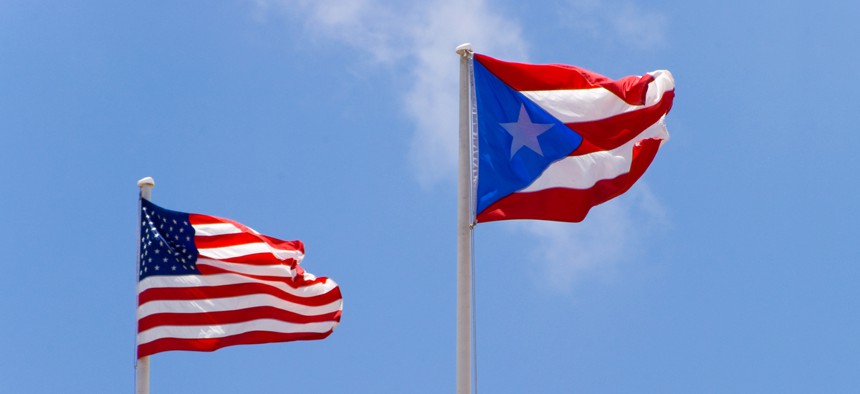Puerto Ricans Voted in Favor of Statehood. What Happens Now?

Puerto Ricans once again voted in favor of statehood this year. Shutterstock
The territory’s only likely path toward statehood would come through Democratic control of the House, Senate, and White House.
Voters in Puerto Rico declared this week they want to move forward with trying to turn the territory into the 51st state.
The nonbinding measure, approved by a 52% to 48% margin, gives Puerto Ricans the go-ahead to pressure Congress toward granting statehood—but whether or not the U.S. House and Senate will be receptive remains to be seen.
The vote on Tuesday was the sixth time Puerto Ricans cast ballots on the question of statehood, a proposal that received overwhelming support in both 2012 and 2017. The voter turnout this year, however, was much higher than the last time Puerto Rico weighed the issue, at 51% compared to 23% in 2017. (In 2017, statehood opponents and those who favor complete political independence encouraged a boycott of the vote because they considered the wording of the ballot question unfairly skewed towards statehood.)
With the 2020 ballot measure now approved, the governor will appoint a seven-member commission to represent the territory in negotiations with the United States. The process for adding states to the union isn’t set in stone, but generally requires the territory to present a plan to Congress and the president, after which a simple majority approval in the U.S. House and Senate, followed by the president’s signature, can result in the territory’s admission as a state.
Turning Puerto Rico, which has been a colonial territory since 1898, into the fifty-first state would greatly expand the rights of its 3.3 million residents. As it currently stands, all Puerto Ricans are American citizens, but can’t vote for president and only have a congressional representative who lacks voting powers.
Another key benefit of statehood would be the opportunity for a larger share of federal funding, something that Puerto Rico’s leaders say they need more now than ever. Earlier this fall, the Trump administration announced that the territory would receive $13 billion in more aid to help rebuild after Hurricane Maria in 2017. But Democrats complained that this assistance, much of which will go to repair the island’s electrical grid, has been desperately needed for years and suggested release was tied to Trump’s desire to win over Latino vote in the key state of Florida. Puerto Rico’s leaders are also dealing with a fiscal crisis that was difficult to manage even before the coronavirus pandemic.
Resident Commissioner Jenniffer Gonzalez-Colon, the territory’s representative in Washington, in May said that these crises are “why we cannot wait any longer to receive from Washington the same treatment that is received in the rest of the nation. There is strength in the union, particularly in moments of collective crisis.”
Congress isn’t under any legal obligation to respect Puerto Rican’s wishes to become a state. The day after the election, Carlos Vargas-Ramos, director of public policy at the Center for Puerto Rican Studies at Hunter College, told the New York Times that Puerto Rico’s commission can use the vote “as a way to urge and nudge Congress to act.”
But he added that Puerto Rican statehood likely isn’t “going to get anywhere.”
Since the nation’s founding with the original 13 colonies, 37 states have been added, the last two in 1959 when Alaska and Hawaii were admitted. Efforts to add Puerto Rico (and, separately, Washington D.C.) as the newest stars on the U.S. flag often hit resistance from Congressional Republicans, who say that the territories would be a lock to add Democrats to the House and Senate. In D.C., this is almost certainly true—the jurisdiction went for former Vice President Joe Biden at a staggering 93% this year (the Democrat’s largest margin of victory in any voting jurisdiction by far), and there hasn’t been a Republican on the city council since 2009.
But the same can’t be said for Puerto Rico. There have been recent Republican-affiliated governors, and the territory’s current Congressional delegate, Gonzalez-Colon, is a Republican. Puerto Rican political analysts believe that the territory could actually end up being a swing state, with neither party gaining a definitive edge.
Even so, the majority of Republicans are unlikely to favor admitting a new state to the union, leaving the fate of Puerto Rico’s most recent statehood quest hanging on the chance that Democrats take control of the House, Senate, and presidency. Several top Democrats have indicated that they support statehood and Biden said in September that if the people of Puerto Rico vote for statehood, he would support it.
While Democrats retained the House and Biden on Saturday won the presidency, the Senate remains to be seen. The question of which party controls the Senate likely won’t be answered until January, as both Georgia Senate races appear to be headed for a run-off.
A 2019 Gallup poll found that 66% of Americans favor admitting Puerto Rico to the union. Somewhat predictably, support was highest among Democrats (83%), young adults between 18 and 29 (80%), and people of color (74%). Among Republicans, 45% favored statehood and 48% opposed it.
The presumptive governor-elect of Puerto Rico is from the pro-statehood New Progressive Party. Pedro Pierluisi declared victory on Tuesday night, and as of Friday morning, leads by 16,000 votes over Carlos Delgado, who is in favor of keeping Puerto Rico as a territory, with 98% of precincts reporting. (Degado has not conceded and called Pierluisi’s declaration of victory “irresponsible.”)
In a statement, Pierluisi said that Puerto Ricans have made their wishes clear. “The people have declared that we no longer want this status,” he said. “We want equality.”
Editor's note: This story was updated after initial publication to reflect that former Vice President Joe Biden was declared the president-elect on Saturday.
Emma Coleman is the assistant editor for Route Fifty.
NEXT STORY: Delinquent Electric Bills from the Pandemic Are Coming Due–Who Will Pay Them?






